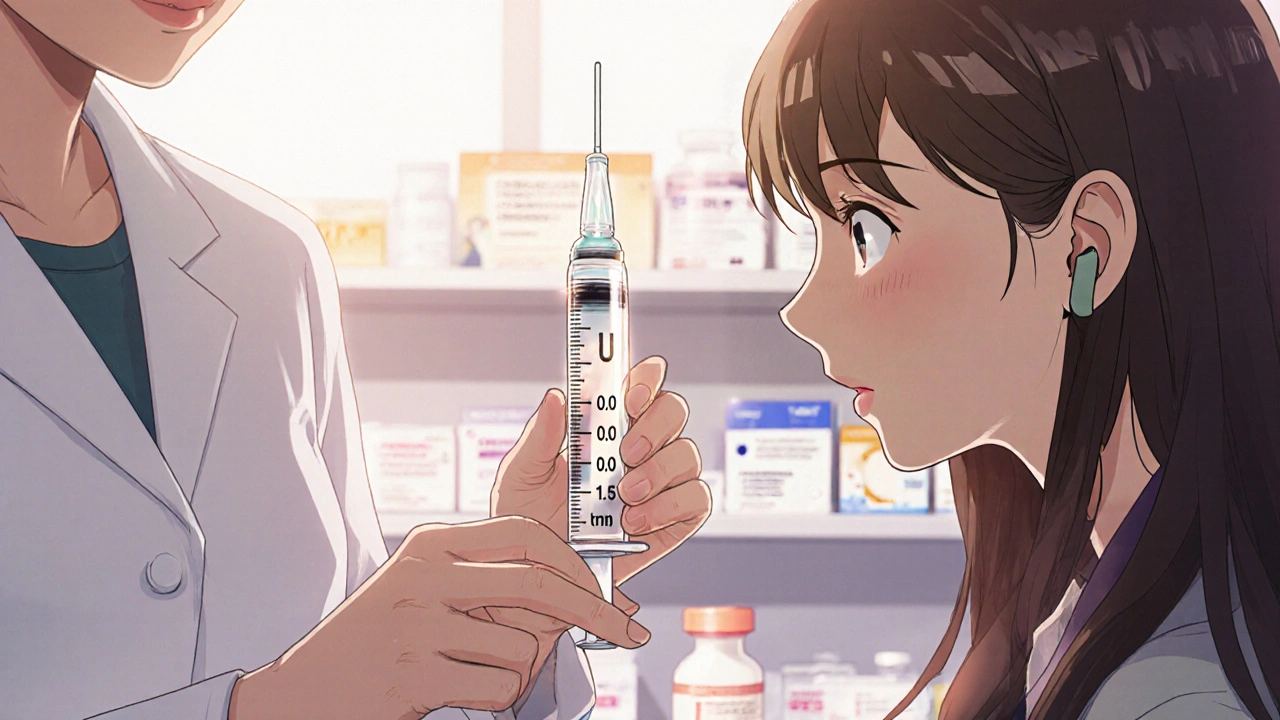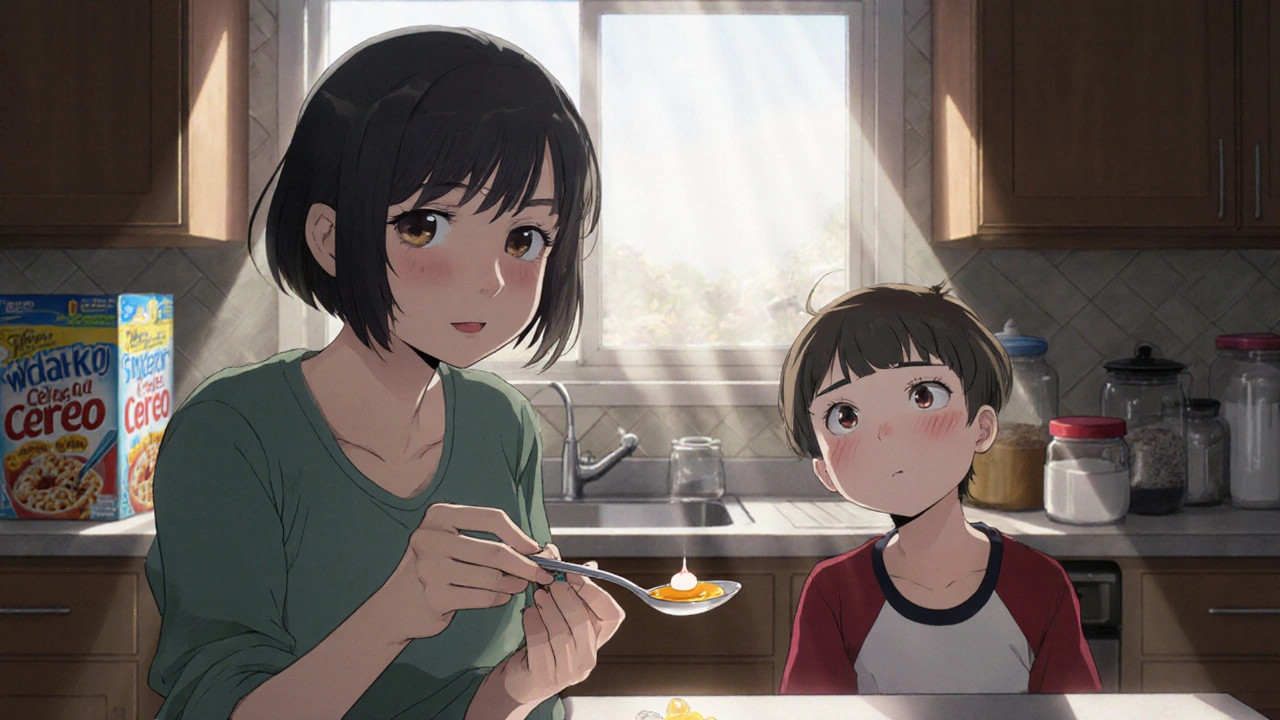Every year, more than 10,000 calls to poison control centers in the U.S. are about one thing: parents giving kids the wrong dose of liquid medicine. And the biggest culprit? The humble kitchen spoon. It’s not just a mistake-it’s a dangerous habit that puts children at risk of overdose, underdose, or worse. You might think you’re being careful by using a teaspoon, but here’s the hard truth: household spoons are not safe for giving medicine to children.
Why Your Kitchen Spoon Is a Dangerous Tool
A teaspoon isn’t a teaspoon when it comes to medicine. That spoon you use for sugar or cereal? It can hold anywhere from 3 to 7 milliliters (mL). But the standard medical teaspoon? Exactly 5 mL. That’s a 40% difference. One extra milliliter might not sound like much, but for a 10-month-old baby, it could mean the difference between a safe dose and a hospital visit. Research from the National Institutes of Health shows that nearly 40% of parents give the wrong amount when using kitchen spoons. And it’s not just about being sloppy-your spoon might be too big, too small, or just not designed for precision. Even a tablespoon, which you might think is fine for a larger dose, can deliver three times the intended medicine. That’s not a typo. Three times. That’s enough to cause serious side effects or even toxicity in young kids.The Science Behind the Warning
The American Academy of Pediatrics (AAP) first warned against kitchen spoons back in 1978. Since then, every major health agency-CDC, FDA, NIH-has backed that advice. Why? Because children’s bodies react differently to medicine than adults’. A dose that’s safe for a 60-kilogram adult could be deadly for a 7-kilogram infant. A 2014 study in Pediatrics found that parents using household spoons were twice as likely to make a dosing error. Even worse, when labels said “teaspoon” or “tsp,” one in three parents reached for their kitchen spoon. But when the label said “5 mL,” only 1 in 10 did. That’s a 23-point drop in dangerous behavior just by changing the words on the bottle.What You Should Use Instead
The best tool for giving liquid medicine to a child? An oral syringe. It’s the most accurate. It has clear markings down to 0.1 mL. It lets you measure 3.5 mL, 2.2 mL, or 0.8 mL without guessing. You can even gently squirt the medicine into the side of your child’s mouth, between the cheek and tongue, so they don’t choke or spit it out. If you don’t have a syringe, use the dosing cup that came with the medicine. But only if it’s marked in milliliters. Don’t use the cup that came with someone else’s medicine. Don’t use a regular drinking cup. Don’t use a shot glass. Only use what was provided with the prescription. Dosing droppers are okay for small amounts, but they’re harder to control and can leak. Dosing cups are fine for doses above 5 mL, but they’re useless for 1.5 mL or 4.2 mL. Oral syringes work for every dose, every time.
How to Use an Oral Syringe Correctly
It’s simple, but most parents don’t know how to do it right:- Draw up the exact amount shown on the label-look at the mL markings, not the numbers on the bottle.
- Hold the syringe at eye level to make sure the liquid reaches the right line.
- Place the tip inside your child’s mouth, near the cheek, not the back of the throat.
- Press the plunger slowly so they can swallow without gagging.
- Wash the syringe with warm water after each use. Don’t let it dry out with medicine inside.
Why Labels Still Say ‘Teaspoon’ (And What to Do)
You might still see “1 tsp” on medicine bottles. That’s because not all manufacturers have switched to milliliter-only labeling. The FDA and AAP have pushed for this change for years, but progress is slow. Don’t wait for the label to change. Change your behavior now. When you see “tsp” or “teaspoon,” translate it in your head: 5 mL. Then grab your syringe. Don’t trust the spoon. Don’t assume it’s the same. Always measure with the tool, not the word.What Happens When You Get It Wrong
An overdose of acetaminophen (Tylenol) can cause liver failure. Too much ibuprofen can lead to kidney damage or stomach bleeding. Underdosing antibiotics means the infection doesn’t clear-and can come back stronger, resistant to treatment. One mother in Melbourne told her story to a local clinic: She gave her 2-year-old “a teaspoon” of amoxicillin because the bottle said so. She used her coffee spoon. The next day, the child was vomiting and lethargic. The hospital found she’d given nearly 8 mL instead of 5. That’s 60% too much. She didn’t mean to harm her child. She just didn’t know.
What Pharmacies Are Doing to Help
Places like Aspirus and other major pharmacy chains now routinely include oral syringes with every pediatric liquid prescription. Pharmacists are trained to ask, “Do you have a measuring tool?” If you say no, they hand you a syringe. They also write “mL” on the label in big letters, even if the prescription says “tsp.” Some hospitals now require parents to demonstrate how they’ll give the medicine before leaving the clinic. If you can’t show them using a syringe, you get one-and a quick lesson. This isn’t being overprotective. It’s standard safety.What You Can Do Today
You don’t need to wait for a new label or a new law. Here’s your action plan:- Throw out all medicine spoons from past prescriptions-they’re not accurate.
- Get an oral syringe from your pharmacy. Keep one in your medicine cabinet.
- Always measure in milliliters. Never guess.
- Read the label twice: once for the dose, once for the unit.
- Ask your pharmacist: “Do you have a syringe for this?” Even if you think you don’t need it.
Final Thought: It’s Not About Being Perfect. It’s About Being Safe.
You’re not a bad parent for using a spoon before. You were doing what felt natural. But now you know better. And knowing better means doing better. Medicine isn’t soup. It’s not something you scoop by eye. It’s a precise tool that can heal-or hurt-depending on how you use it. For your child, that difference matters more than you think.Can I use a kitchen teaspoon if I don’t have a syringe?
No. Kitchen teaspoons vary in size and are not reliable for measuring medicine. Even if you think you’re giving exactly one teaspoon, you could be giving 3 mL or 7 mL instead of the correct 5 mL. Always use a calibrated oral syringe or dosing cup marked in milliliters.
What if the medicine label says ‘teaspoon’ instead of ‘mL’?
Convert it in your head: 1 teaspoon = 5 mL. Then use your oral syringe to measure 5 mL. Never rely on the spoon in your drawer. The label’s wording doesn’t change the need for accurate measurement tools.
Are dosing cups better than spoons?
Dosing cups are better than spoons, but only if they’re marked in milliliters and you use them correctly. Many dosing cups only have markings at 5 mL, 10 mL, or 15 mL intervals, so they’re not accurate for doses like 3.5 mL or 1.2 mL. Oral syringes are still the most precise option for any dose.
Why do pharmacies give out oral syringes now?
Because research shows error rates drop by 20% or more when parents use syringes instead of spoons. Pharmacies are responding to safety data and changing their practices to prevent preventable harm. It’s now standard care.
How do I clean an oral syringe after use?
Rinse it with warm water right after each use. Don’t let medicine dry inside. You can gently pull the plunger out and wash both parts. Let it air dry. Don’t use soap unless recommended by your pharmacist-it can leave residue. Store it clean and dry for next use.
Is it safe to give medicine in the back of the throat?
No. Putting medicine in the back of the throat can cause choking or aspiration. Always squirt it gently between the cheek and tongue. This lets your child swallow naturally and reduces the risk of coughing or spitting it out.


Hi, I'm Caden Lockhart, a pharmaceutical expert with years of experience in the industry. My passion lies in researching and developing new medications, as well as educating others about their proper use and potential side effects. I enjoy writing articles on various diseases, health supplements, and the latest treatment options available. In my free time, I love going on hikes, perusing scientific journals, and capturing the world through my lens. Through my work, I strive to make a positive impact on patients' lives and contribute to the advancement of medical science.